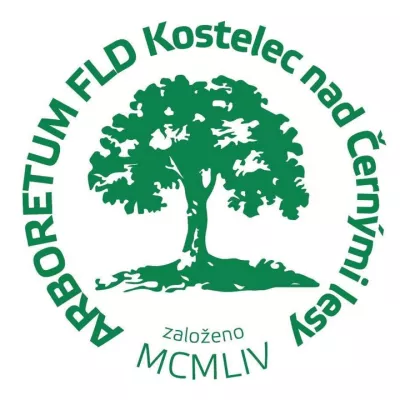General information
RDP Priority
- P4. Ecosystems management
RDP Focus Area
- 4A: Biodiversity restoration, preservation & enhancement
RDP Measure
- M08: Investments in forest areas
Beneficiary type
- Research institution
Summary
Czechia’s arboretum project in Kostelec nad Černými lesy aimed to improve access and useability of its unique space for target groups and the wider public. Owned by the University of Life Sciences in Prague, the arboretum was predominantly used by its students for scientific and research purposes, but it was felt that this special natural habitat with wetland areas should also become more available for the public for recreational and educational uses.
The project activities involved creating a nature trail across a wetland area, improving access and equipping the forest with furnishings such as information boards and a rest place. The arboretum can now accommodate more visitors, facilitate direct contact with nature and better promote the importance of wetlands.
Results
- 422 metres of nature trail were established, ten information boards were erected and one rest facility was built.
- An increase in the number of on-site visitors was noted.
- A better informed and educated public, students, and pupils was achieved.
- A more accessible and environmentally sustainable wetland area was created that is used and appreciated by a wider public.
- It is now possible to visit the arboretum not only on specific open days or other special events, but at any time.
- The possibility has been created to connect the arboretum with other tourist routes.

Promoter
The Czech University of Life Sciences Prague
Funding
Total budget: 42 589 (EUR)
EAFRD: 21 082 (EUR)
National/Regional: 21 507 (EUR)
Ressources
Good Practice Report - Improving access to wetland habitats in an arboretum near Prague
(PDF – 5.69 Mo)
Context
The arboretum belongs to the Czech University of Life Sciences Prague. It is located 35 kilometres east of Prague, in Kostelec nad Černými lesy. The arboretum contains tree species of the temperate and boreal zones of the northern hemisphere. Over the years, shrubs and ornamental taxonomic groups were added to the traditional range of commercial tree species and are maintained in accordance with their ecological requirements.
The arboretum has many roles, including didactical. It is an ideal space for forestry students to hold practical dendrology classes, collect herbarium specimens and find inspiration for their academic theses.
The arboretum is also important for scientific reasons. It allows for research and monitoring of the introduced species, such as their growth rates, carrying out propagation experiments, producing forest seeds and breeding forest tree species.
The arboretum has an outstanding gene pool of tree species and helps make dendrology a popular topic also among the public. With its easily accessible location, it has the potential to be an important recreational space for the wider area.
Historically, the arboretum contained three ponds, two of which have already been rebuilt and populated with wetland fauna and flora of high ecological value. A project idea was developed to give visitors the opportunity to further explore the arboretum and its different types of protected wetland habitats with a focus on woody plants.
Objectives
The main objectives of the project were to:
- Improve access to the arboretum for a range of target groups including university students, pupils of secondary, primary and kindergarten schools in the region, and the public to experience the natural environment of a wetland habitat. The intention was to allow the public to easily observe the wetland habitats closely and their many water-dependent animals and plants.
- Ensure that visitors can have direct contact with the trees and plants.
- Raise the awareness and understanding of the public about these important habitats, so that they could be more inclined to support their protection in the future.
Activities
The project involved the following activities:
- Creating a nature trail with two circuits - the reservoir circuit around an existing pond and the stream floodplain circuit below a dam.
- Creating improved access to the wetland by building a raised boardwalk on wooden pilings to allow visitor movement directly through the wetland environment.
- Enhancing the educational function of the arboretum by designing and building information boards that describe the specific habitats at ten different stops.
- Constructing a rest facility, including an information board, providing an overall introduction to the importance of wetland communities.
- Reconstructing several access paths to ensure the operational safety of the existing trees and installing furnishings appropriate to the natural environment.
Main results
- 422 metres of nature trail were established, ten information boards were erected, and one rest facility was built.
- An increase in the number of on-site visitors was noted.
- A better informed and educated public, students, and pupils was achieved.
- A more accessible and environmentally sustainable wetland area that is used and appreciated by a wider public was created.
- It is now possible to visit the arboretum not only on specific open days or other special events, but at any time.
- The opportunity has been created to connect the arboretum with other tourist routes.
Key lessons
- It is crucial to consider the environmental impact of attracting relatively high numbers of visitors to natural habitats, including the need for rubbish bins and resting places.
- When constructing trails, it is advisable to consider historic flooding levels to size the paths accordingly. Unfortunately, in July 2021, the arboretum was flooded and caused trees to fall on the new trail causing substantial damage and its temporary closure due to repairs. By then, the trail had become very popular, and the public expressed a great deal of interest and concern about the flood damage. There were many questions on social media and in email correspondence about the progress of the repairs and when the arboretum might reopen.
- It is necessary for projects open to the public to consider the timing of necessary repairs and maintenance tasks, and to be prepared for possible acts of vandalism and natural disasters.
